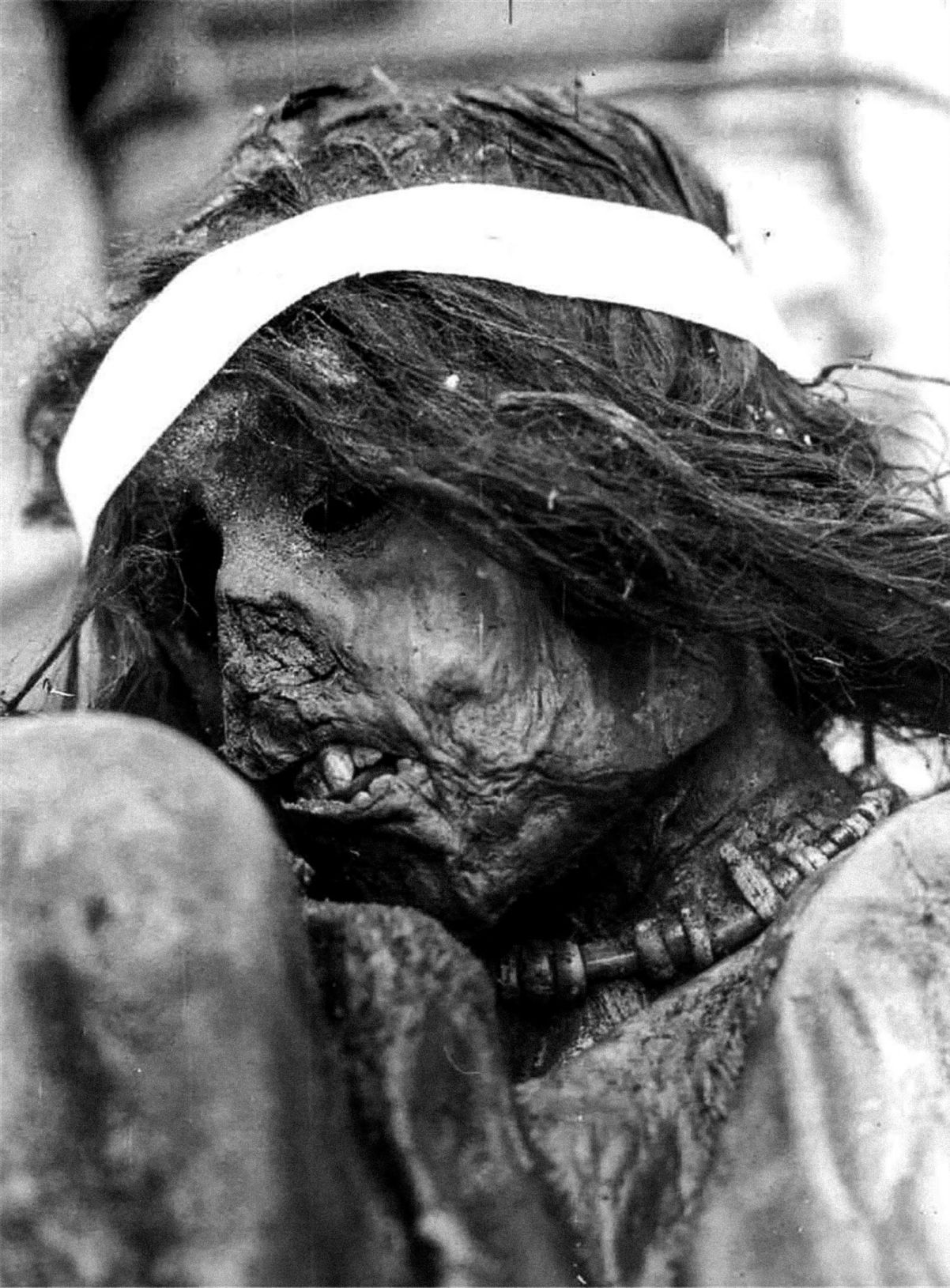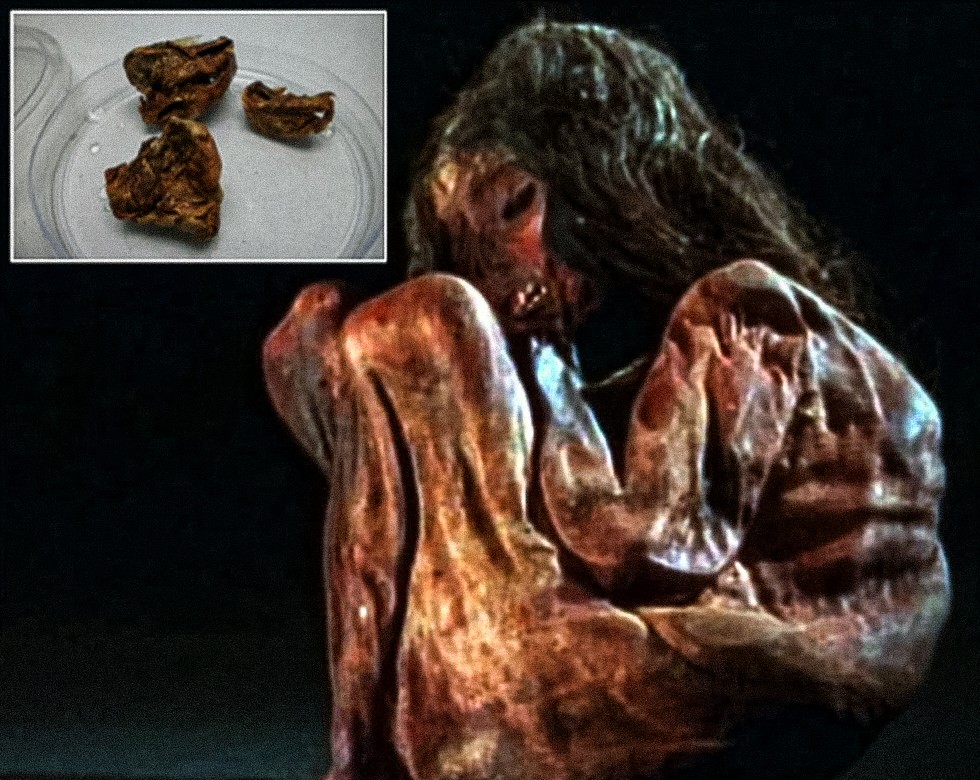In 1985, hikers scaling Argentina’s Aconcagua mountain encountered a horrible discovery: a 7-year-old boy, frozen in place for a long period of time. Archaeologists were informed and they conducted an excavation of the body.

Subsequent studies indicated that the Aconcagua boy had been sacrificed as part of an Incan ritual 500 years earlier and had been preserved naturally due to the mountain’s cold and dry setting. Recently, a survey of the Aconcagua boy’s mitochondrial DNA has unveiled that he was a member of a population of native South Americans that was nearly eradicated following the Spanish conquest of the New World.
A ritual of child sacrifice known as capacocha resulted in the demise of the Aconcagua boy. It is believed that he was killed by a blow to the head. Several mummies, linked to this ritual, have been found scattered throughout Inca territory, but the Aconcagua boy stands out as one of the best preserved, as concluded by Antonio Salas, a human geneticist from the University of Santiago de Compostela in Spain. He died at an altitude of 5,300 meters, in one of the driest climates on Earth. This gave Salas hope that the mummy might still contain traces of DNA.

Salas and his team were able to pull the complete mitochondrial genome (comprised of 37 maternal-inherited genes) from one of the mummy’s lungs. This was a smart move, noted Bastien Llamas, a geneticist from the University of Adelaide in Australia who studies South American populations from antiquity, as it minimized the risk of contamination.
Llamas, who was not part of the study, pointed out that the mummy had not been handled by any human since its discovery, thus reducing the possibility of contamination by people who had been working on it. To ensure that his team did not introduce any of their own DNA into the find, Salas genotyped every member of the research team.
When Salas examined the mitochondrial DNA of the Aconcagua boy, it revealed a genome that was distinct from anything Salas had previously seen. The boy’s pattern of genetic variations belonged to a population called C1b, which dates back to the earliest Paleoindian settlements more than 18,000 years ago. C1b is composed of many distinct subgroups, each of which had become isolated from one another due to geographic spread and developed their own unique traits.
However, the Aconcagua boy’s genome did not fit into any of them. Instead, he was part of a previously unidentified group of native South Americans, which Salas and his team have named C1bi and which they believe originated in the Andes about 14,000 years ago. They have published their findings in the journal Scientific Reports.
In his search through both ancient and modern genetic databases, Salas identified four people who appeared to belong to the C1bi group. Out of these four, three are present-day individuals from Peru and Bolivia, while the fourth sample came from a person from the Wari Empire. This implies that C1bi is quite rare today. Nonetheless, the discovery of two ancient DNA samples of this type suggests that it may have been more commonplace in the past.
According to Andres Moreno-Estrada, a population geneticist from Mexico’s National Laboratory of Genomics for Biodiversity in Irapuato who was not involved in the study, If you sample just one or two individuals, “what are the chances that you pick the rare guy?” he says. “Most likely, you’re picking the common guy.”
Llamas was not taken aback that a likely customary pre-Columbian genetic group almost vanished after the Spanish showed up. “Up to 90% of Native South Americans died very quickly” after the conquest, mostly due to contagious disease, he remarked, “You can imagine that a lot of genetic diversity was lost as well.” Especially in the Americas, where such an intense population decrease was trailed by hundreds of years of blending by European, Amerindian, and African gatherings, the genes of present-day individuals “aren’t always a faithful representation of what happened in the past,” Salas says. The Aconcagua boy’s genome, on the other hand, is “a window to 500 years ago.”
Wilson, an archaeologist from the University of Bradford in the UK who studies capacocha mummies and was not a part of the current work, remarks, “It’s as if the Inca put genetic samples in deep freeze for us.” Salas does not intend to squander the opportunity and is now working on the complete nuclear genome of the Aconcagua boy, which would provide valuable details regarding his family tree and his distinct genetic makeup.
He also intends to sequence the DNA of all the microbes in the mummy’s gut, including his microbiome and any potential infectious germs he might have had. This would assist in understanding how microorganisms – both harmful and beneficial – have evolved over time. Wilson is hopeful that similar studies can be conducted on other capacocha mummies. “They are certainly remarkable messengers from the past.”
The study was originally published in the journal Scientific Reports on November 12 2015.




